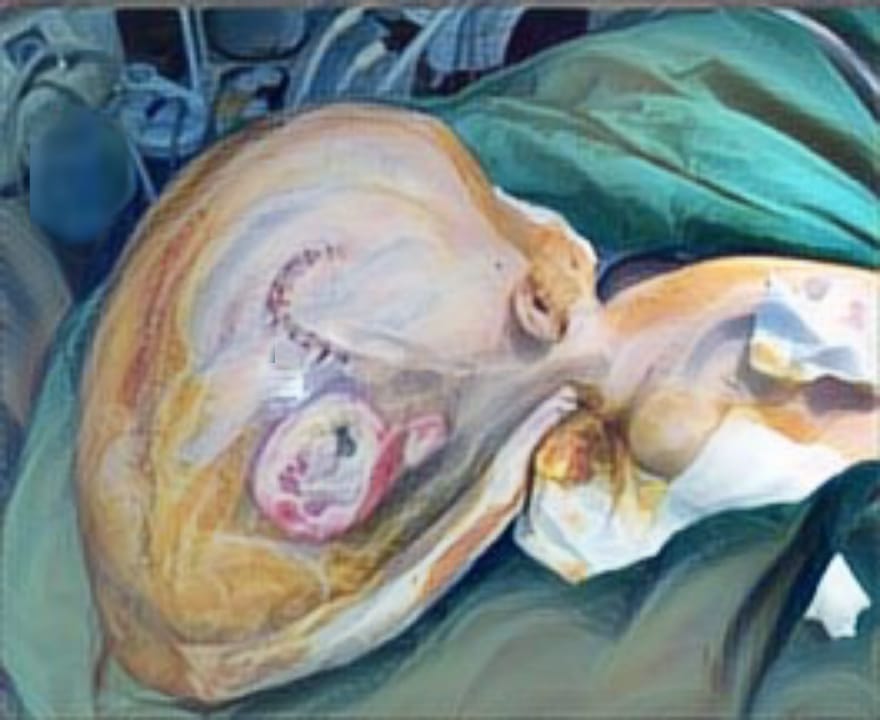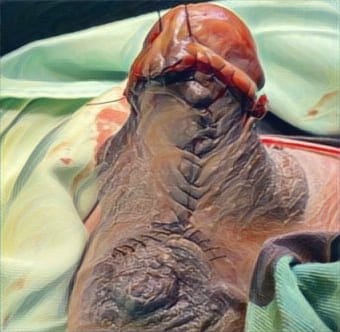THE USE OF ALOE VERA GEL ON SCAR COLLAGEN
Downloads
Highlights:
- The active chemical compounds present in Aloe vera are known to be efficacious in the process of healing open wounds.
- The use of Aloe vera can significantly improve scar collagen, with the highest improvement observed in the group treated with 50% Aloe vera gel.
Abstract:
Introduction: Aloe vera have active chemicals substances including saponins, tannins, flavonides, and polyphenols. Saponin takes a role as a disinfectant, so it is normally effective for healing any open wounds, while tannins have ability to be an antiseptic. This study aims to see how the effect of the Aloe vera gel on wound collagen, and too inspect which is the most effective concentration of the Aloe vera gel in the formation of wound collagen in wistar strains (Rattus novergicus) rats.
Methods: This study uses a post-test only method with control group design. The subjects of this study were 28 male Wistar rats (Rattus novergicus). The subjects were divided into 4 groups consisting of 1 negative control group and 3 treated groups, the control group was not given any treatment, while the treated group was given the Aloe vera gel with each concentrations of 12.5%, 25%, and 50% respectively. The experiment was started by making a wound on the back of the rat which then be followed by applying the gel to the wound for 14 days.
Results: The results showed the group with the 50% Aloe vera gel treatment had the best collagen formation, followed by a concentration of 25%, 12.5%, and the control group. Therefore, the used of Aloe vera has given good change in scar collagen, and the best scar collagen can be viewed in the group with 50% concentrate of Aloe vera.
Conclusion: Increasing the concentration of applied Aloe vera gel led to the development of thicker collagen tissue in wounds on male white rats (Rattus novergicus strain Wistar). This suggests that Aloe vera may serve as a viable alternative treatment for wounds in our daily lives.
Atik N. Perbedaan Efek Pemberian Topikal Gel Lidah Buaya (Aloe vera L.) dengan Solusio Povidone Iodine terhadap Penyembuhan Luka Sayat pada Mencit. Bagian Histol Fak Kedokteran Unpad. 2009.
Puspitasari R. Uji Efektifitas Ekstra Lidah Buaya (Aloe vera L.) Terhadap Penyembuhan Luka Sayat Pda Mencit Jantan (Mus muscullus) Galur Swiis. Cerata J Pharm Sci. 2016;
Penelitian B, Pengembangan dan Riset Kesehatan Dasar. 2013;
Nazir F. Pengaruh Pemberian Gel Lidah Buaya (Aloe vera) Terhadap Jarak Pinggir Luka pada Tikus Wistar. J Kesehatan Andalas. 2015;4(3):827–34.
Asy'ari Hasbullah UH. R Riset Kesehatan Dasar (RISKESDAS) Provinsi Nanggroe Aceh Darussalam Tahun 2007. 2016;4(1):20–4.
Rohmawati N. Efek Penyembuhan Luka Bakar dalam Sediaan Gel Ekstrak Etanol 70% Daun Lidah Buaya (Aloe vera L.) Pada Punggung Kelinci New Zealand. Skripsi.
Nugraha GA. Efek Pemberian Ekstrak Etaol 70% Daun Karamunting (Rhadormynthus tormentosa (Aiton) Hassk) Topikal terhadap Gambaran Histopatologi Ketebalan Serat Kolagen Penyembuhan Luka Insisi Kulit Tikus Putih Galur Wistar. Skripsi. 2016;
Sherwood L. Fisiologi Manusia dari Sel ke Sistem. 6th ed. Jakarta: EGC; 2012.
Espirtu K. Integumentary System. Histo Lec. 2012;
Eroschenko VP. Atlas Histologi diFiore dengan Korelasi Fungsional. 11th ed. Jakarta: 2010; 2010.
Martini F. Fundamentals Anatomy & Physiology. 9th ed. USA: Benjamin Cummings; 2012.
Prasetyo BF, Wientarsih I, Priosoeryanto BP. Ambon dalam Proses Penyembuhan Luka pada Mencit. 2010;11(2):70–3.
Kartika RW, Bedah B, Paru J, Luka AP. Perawatan Luka Kronis dengan Modern Dressing. 2015;42(7):546–50.
Ahliadi SS. Pengaruh Ekstrak Daun Binahong (Anredera cordifolia (Tenore)Steenis) Terhadap Reepitalisasi Epidermis Pada Luka Bakar Tikus Sprague dawley. UIN Syarif Hidayatullah. 2014;
Miladiyah I, Prabowo BR. Ethanolic extract of Anredera cordifolia ( Ten .) Steenis leaves improved wound healing in guinea pigs. 2012;31(1):4– 11.
Puti I, Sabirin R, Maskoen AM, Hernowo BS. Peran Ekstrak Etanol Topikal Daun Mengkudu ( Morinda citrifolia L .) pada Penyembuhan Luka Ditinjau dari Imunoekspresi CD34 dan Kolagen pada Tikus Galur Wistar Role of Noni (Morinda citrifolia L .) Leaf Ethanolic Extract Topical Application on Wound Heal. 2011;45(4):226–33.
Gurtner G. Grabb and Smith's Plastic Surgery. 6th ed. 2007.
Napanggala, Susianti, Apriliana. E., 2014. Pengaruh Pemberian Getah Tanaman Jarak Pagar (Jatropha curcus L.) Secara Topikal Terhadap Tingkat Kesembuhan Luka Iris Pada Tikus Putih Jantan Sprague dawley. ISSN 2337-3776
Chindo Nycho Alva. Benefits of aloe vera substance as anti-inflammatory of stomatitis. Jurnal Majority, 2015,4.2.
Copyright (c) 2019 Amania Nur Alam, Muhammad Jailani, Siti Hajar

This work is licensed under a Creative Commons Attribution-ShareAlike 4.0 International License.
JURNAL REKONSTRUKSI DAN ESTETIK by Unair is licensed under a Creative Commons Attribution-ShareAlike 4.0 International License.
- The journal allows the author to hold copyright of the article without restriction
- The journal allows the author(s) to retain publishing rights without restrictions.
- The legal formal aspect of journal publication accessbility refers to Creative Commons Attribution Share-Alike (CC BY-SA)




















